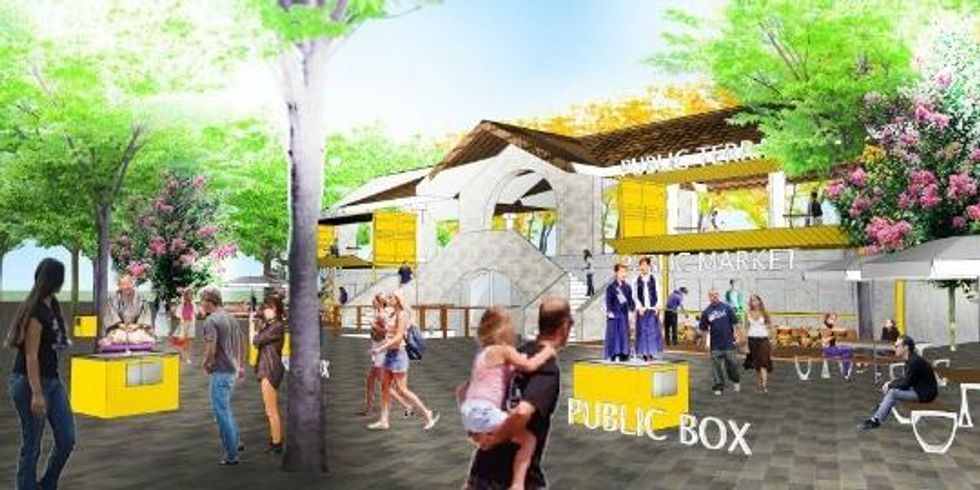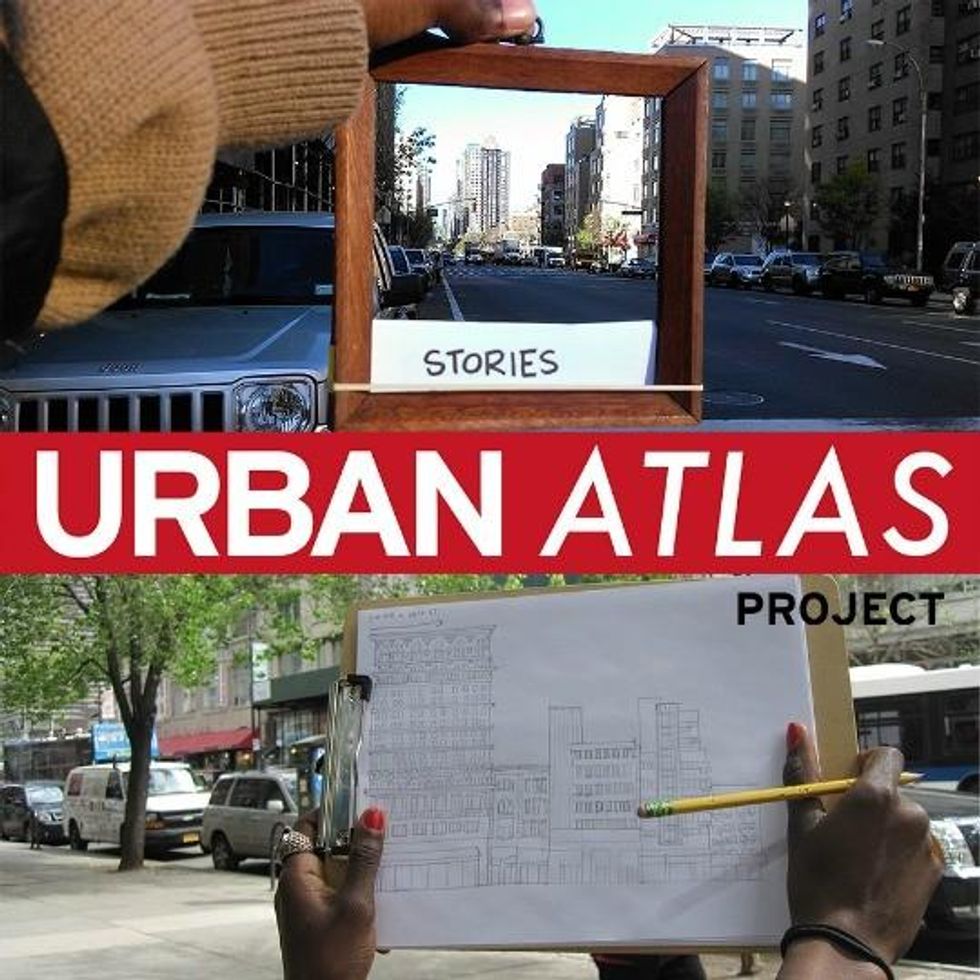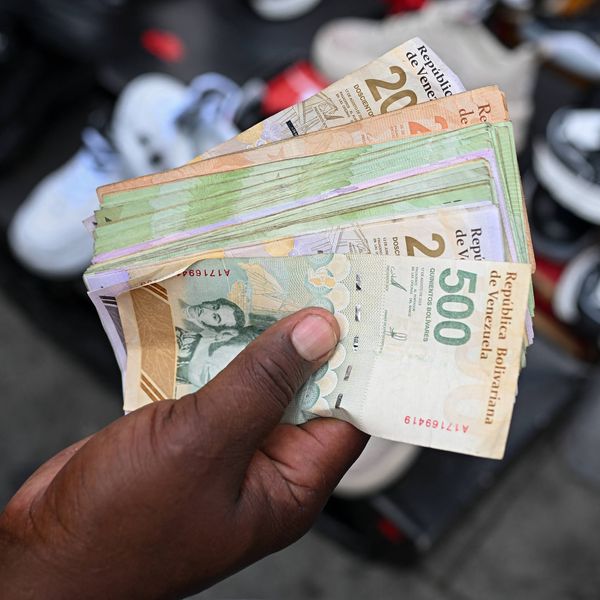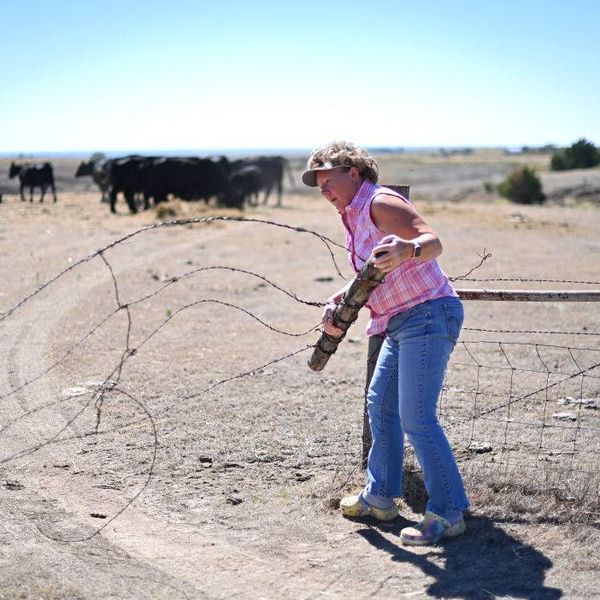Visionaries Imagine a New York City 'Designed for Free Speech'
From 'People's Pulpits' in Times Square to an 'Urban Atlas' in Harlem, designers transform places for 'public participation'
What does a space for free speech look and feel and sound like?"
This is the question that artists, performers, and architects are taking on in an ongoing design competition and exhibition, organized by Theatrum Mundi and the American Institute of Architects--New York, in which participants "propose architectural or performative designs (temporary or permanent) that transform spaces in New York City into places for public 'demonstration'" and free speech.
This concept, while not new in a city with a vibrant history of protest and organizing, has unearthed a trove of proposals that are sure to add to New York's struggle over what constitutes free speech and who gets to participate.
In one proposal, participants plan to design a "public terrace" for recent immigrants, located in Columbus Park, which has historically been a gathering place for new arrivals to the country. The design would include a "History Box," which designers Gentaro Matsubara, Shingo Sekiya, and Jeon Young-mi describe as a "communication tool to learn about the history of the site about immigrants that used to live and work near around Columbus Park."

The "Urban Atlas Project" in Harlem aims to provide residents with "a forum to recognize neighbors with similar interests, voice concerns about how things are changing, develop ideas around how to make things better and start a movement of awareness that can lead toward a movement of action," according to designers Sabrina Dorsainvil and Luisa Munera.

The 40 proposals include a mobile "speech bubble" as well as a pop-up "sound garden" and take on topics of gentrification, displacement, state repression, and more. The full list of proposals can be perused on the competition's website.
Designers Raquel de Anda, Gan Golan, and Ron Morrison, who proposed an imaginary "Floating Agora" for free speech, write, "For free speech to return to the city, a journey is required."
_____________________
An Urgent Message From Our Co-Founder
Dear Common Dreams reader, The U.S. is on a fast track to authoritarianism like nothing I've ever seen. Meanwhile, corporate news outlets are utterly capitulating to Trump, twisting their coverage to avoid drawing his ire while lining up to stuff cash in his pockets. That's why I believe that Common Dreams is doing the best and most consequential reporting that we've ever done. Our small but mighty team is a progressive reporting powerhouse, covering the news every day that the corporate media never will. Our mission has always been simple: To inform. To inspire. And to ignite change for the common good. Now here's the key piece that I want all our readers to understand: None of this would be possible without your financial support. That's not just some fundraising cliche. It's the absolute and literal truth. We don't accept corporate advertising and never will. We don't have a paywall because we don't think people should be blocked from critical news based on their ability to pay. Everything we do is funded by the donations of readers like you. Will you donate now to help power the nonprofit, independent reporting of Common Dreams? Thank you for being a vital member of our community. Together, we can keep independent journalism alive when it’s needed most. - Craig Brown, Co-founder |
What does a space for free speech look and feel and sound like?"
This is the question that artists, performers, and architects are taking on in an ongoing design competition and exhibition, organized by Theatrum Mundi and the American Institute of Architects--New York, in which participants "propose architectural or performative designs (temporary or permanent) that transform spaces in New York City into places for public 'demonstration'" and free speech.
This concept, while not new in a city with a vibrant history of protest and organizing, has unearthed a trove of proposals that are sure to add to New York's struggle over what constitutes free speech and who gets to participate.
In one proposal, participants plan to design a "public terrace" for recent immigrants, located in Columbus Park, which has historically been a gathering place for new arrivals to the country. The design would include a "History Box," which designers Gentaro Matsubara, Shingo Sekiya, and Jeon Young-mi describe as a "communication tool to learn about the history of the site about immigrants that used to live and work near around Columbus Park."

The "Urban Atlas Project" in Harlem aims to provide residents with "a forum to recognize neighbors with similar interests, voice concerns about how things are changing, develop ideas around how to make things better and start a movement of awareness that can lead toward a movement of action," according to designers Sabrina Dorsainvil and Luisa Munera.

The 40 proposals include a mobile "speech bubble" as well as a pop-up "sound garden" and take on topics of gentrification, displacement, state repression, and more. The full list of proposals can be perused on the competition's website.
Designers Raquel de Anda, Gan Golan, and Ron Morrison, who proposed an imaginary "Floating Agora" for free speech, write, "For free speech to return to the city, a journey is required."
_____________________
What does a space for free speech look and feel and sound like?"
This is the question that artists, performers, and architects are taking on in an ongoing design competition and exhibition, organized by Theatrum Mundi and the American Institute of Architects--New York, in which participants "propose architectural or performative designs (temporary or permanent) that transform spaces in New York City into places for public 'demonstration'" and free speech.
This concept, while not new in a city with a vibrant history of protest and organizing, has unearthed a trove of proposals that are sure to add to New York's struggle over what constitutes free speech and who gets to participate.
In one proposal, participants plan to design a "public terrace" for recent immigrants, located in Columbus Park, which has historically been a gathering place for new arrivals to the country. The design would include a "History Box," which designers Gentaro Matsubara, Shingo Sekiya, and Jeon Young-mi describe as a "communication tool to learn about the history of the site about immigrants that used to live and work near around Columbus Park."

The "Urban Atlas Project" in Harlem aims to provide residents with "a forum to recognize neighbors with similar interests, voice concerns about how things are changing, develop ideas around how to make things better and start a movement of awareness that can lead toward a movement of action," according to designers Sabrina Dorsainvil and Luisa Munera.

The 40 proposals include a mobile "speech bubble" as well as a pop-up "sound garden" and take on topics of gentrification, displacement, state repression, and more. The full list of proposals can be perused on the competition's website.
Designers Raquel de Anda, Gan Golan, and Ron Morrison, who proposed an imaginary "Floating Agora" for free speech, write, "For free speech to return to the city, a journey is required."
_____________________

